Wrist Fracture Recovery: How to Heal Faster & Stronger
![]() Medically reviewed and edited by: Chris Porter, OTR/L, CHT
Medically reviewed and edited by: Chris Porter, OTR/L, CHT
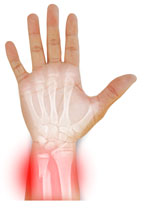 A wrist fracture, particularly a distal radius fracture, is a common injury that can significantly impact daily life. Whether from a fall, sports injury, or accident, recovering properly is essential to restore mobility, strength, and function. While time plays a crucial role in healing, occupational therapy can accelerate recovery, ensuring the wrist regains full strength and flexibility. In this guide, we will explore the healing process and benefits of occupational therapy.
A wrist fracture, particularly a distal radius fracture, is a common injury that can significantly impact daily life. Whether from a fall, sports injury, or accident, recovering properly is essential to restore mobility, strength, and function. While time plays a crucial role in healing, occupational therapy can accelerate recovery, ensuring the wrist regains full strength and flexibility. In this guide, we will explore the healing process and benefits of occupational therapy.
Understanding the Wrist Fracture Healing Process
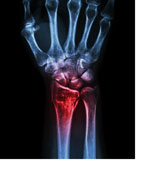 Healing from a broken wrist follows a structured process involving three major phases. The first stage, known as the inflammation phase, lasts from 0-7 days. During this time, the body works to form a blood clot around the fractured bone, and soft tissues begin repairing the injury. Patients typically experience swelling and pain as the body initiates its natural healing process.
Healing from a broken wrist follows a structured process involving three major phases. The first stage, known as the inflammation phase, lasts from 0-7 days. During this time, the body works to form a blood clot around the fractured bone, and soft tissues begin repairing the injury. Patients typically experience swelling and pain as the body initiates its natural healing process.
Why Occupational Therapy is Essential for Wrist Fracture Recovery
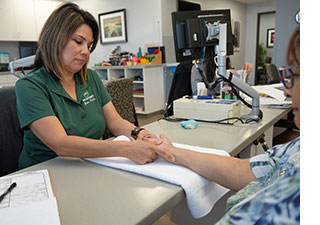 A fractured wrist may heal while immobilized in a plaster cast, but this can often lead to stiffness, muscle loss, and limited mobility. Engaging in occupational therapy is crucial to ensure a full recovery by:
A fractured wrist may heal while immobilized in a plaster cast, but this can often lead to stiffness, muscle loss, and limited mobility. Engaging in occupational therapy is crucial to ensure a full recovery by:- Maintaining joint flexibility to prevent restricted movement.
- Enhancing blood flow to facilitate bone healing.
- Strengthening the surrounding muscles and ligaments to support structural stability.
- Reducing the risk of long-term complications such as stiffness and weakness in the wrist.
 “Seeing an Occupational Therapist who can tailor and individualize a treatment plan based on your needs is essential to achieving optimal results.”
“Seeing an Occupational Therapist who can tailor and individualize a treatment plan based on your needs is essential to achieving optimal results.”
— Chris Porter, OTR, CHT
Lifestyle & Nutrition Tips for Optimal Recovery
 A balanced approach of nutrition, rest, and exercise can significantly impact recovery. Consuming dairy products, leafy greens, and protein-rich foods can enhance bone repair. Avoiding smoking and excessive alcohol is crucial, as these can interfere with bone regeneration. Staying hydrated and engaging in safe rehabilitation exercises can further promote a successful recovery process. Supplements such as calcium, vitamin D and magnesium can also assist in bone growth; however, consulting your doctor beforehand is always a good idea.
A balanced approach of nutrition, rest, and exercise can significantly impact recovery. Consuming dairy products, leafy greens, and protein-rich foods can enhance bone repair. Avoiding smoking and excessive alcohol is crucial, as these can interfere with bone regeneration. Staying hydrated and engaging in safe rehabilitation exercises can further promote a successful recovery process. Supplements such as calcium, vitamin D and magnesium can also assist in bone growth; however, consulting your doctor beforehand is always a good idea.
Post-Surgical Rehabilitation: Occupational Therapy after Surgery
For patients requiring surgical treatment, procedures such as internal fixation with screws or plates, percutaneous fixation or external fixation may be used to stabilize unstable fractures. Following surgery, occupational therapy helps manage pain, swelling, and stiffness, and promotes ROM and strength to regain functional use of your wrist and hand.
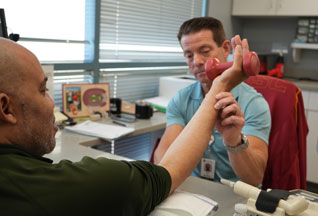
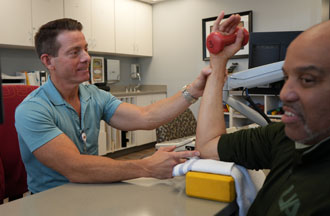
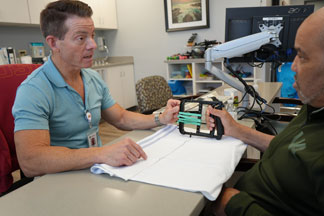
Get Expert Occupational Therapy for Faster Recovery
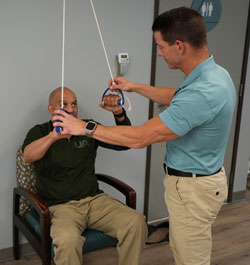
 Schedule an Appointment Today:
Schedule an Appointment Today:
For your convenience San Antonio Regional Hospital has three physical therapy locations that are ready to help you. Click here to print a flyer of all three of our locations. Click here to view a map of our locations.
